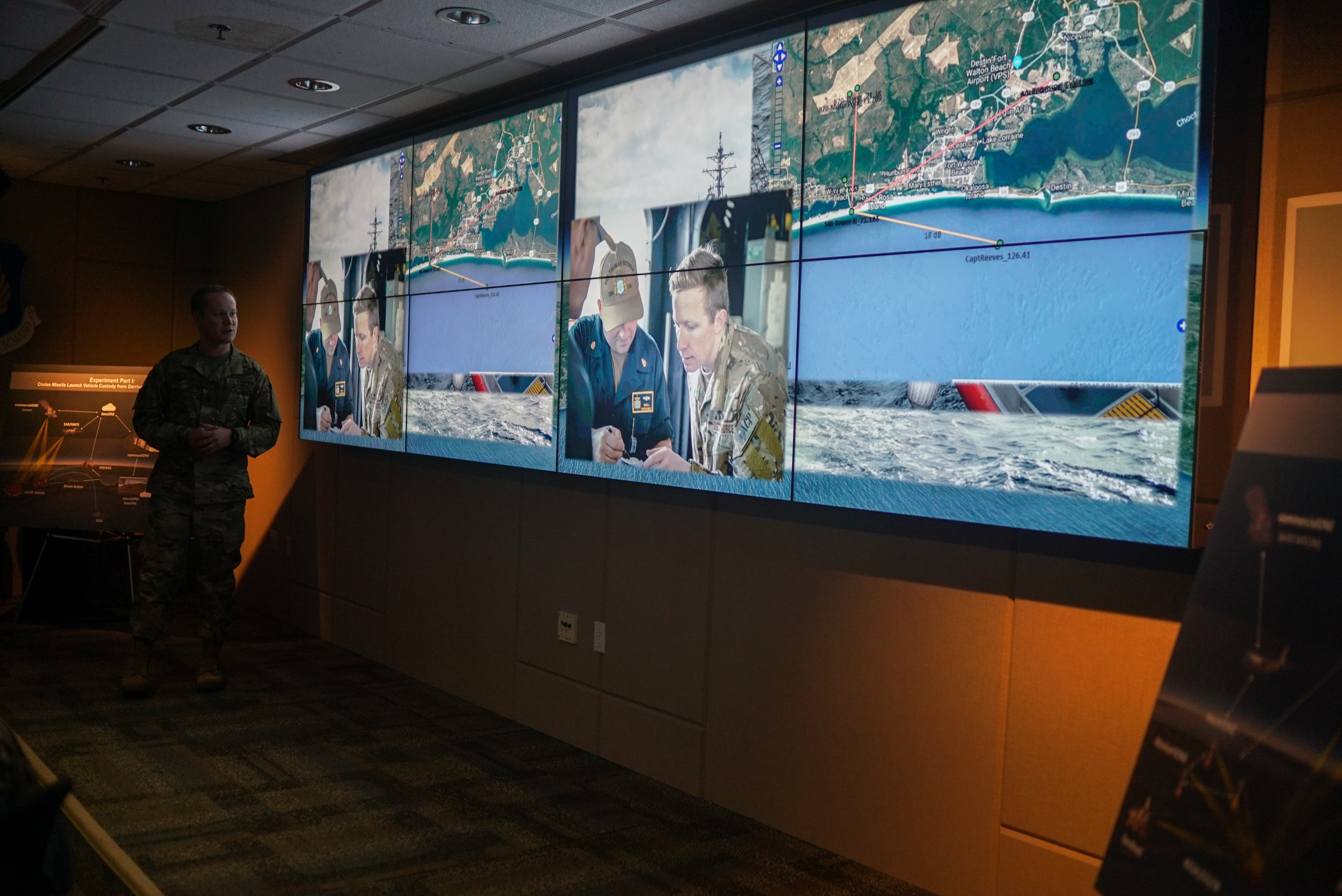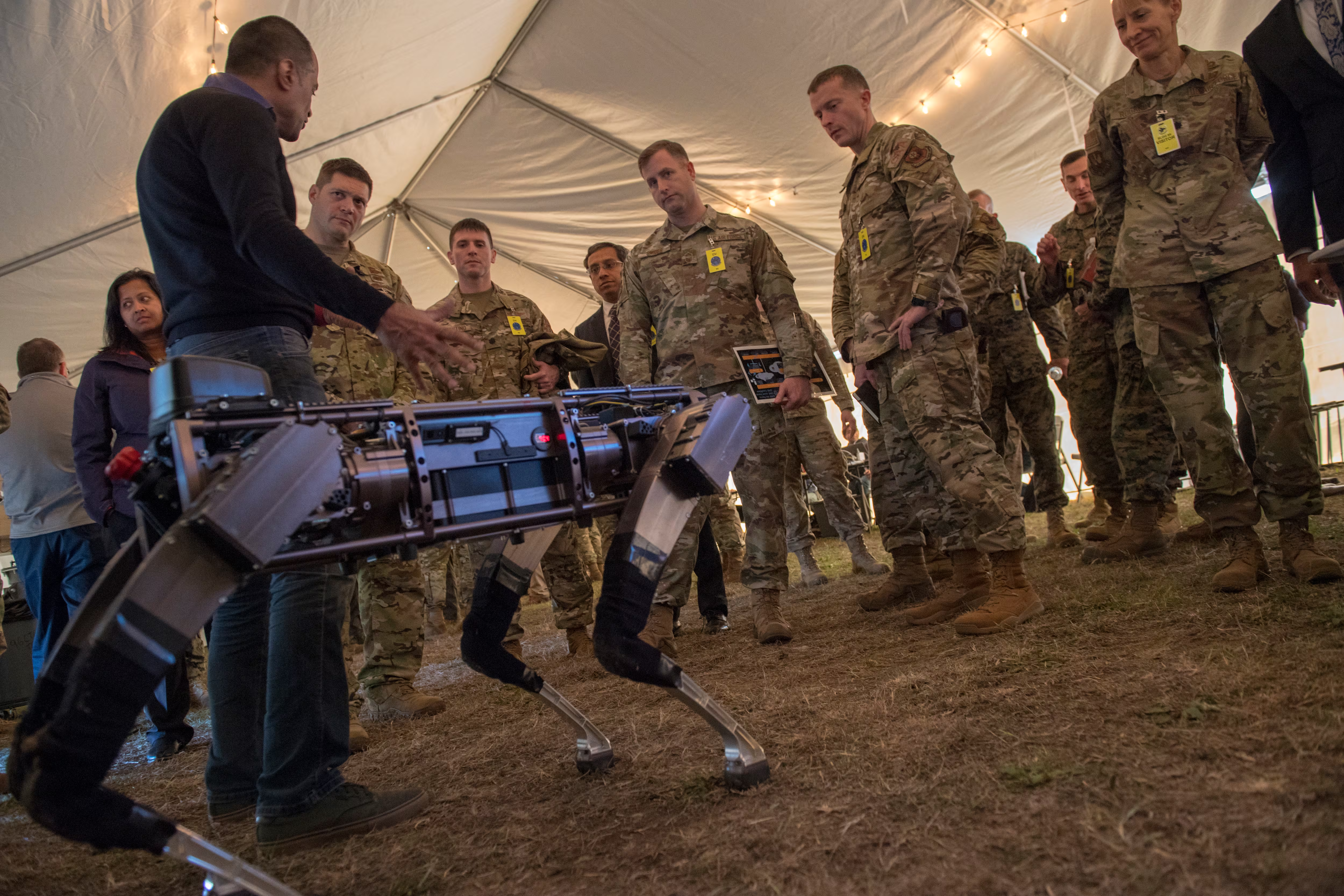WASHINGTON — The U.S. Air Force on July 1 announced its second round of Advanced Battle Management System contracts, a series of awards to 18 companies worth up to $950 million apiece.
Each of the winning companies will receive indefinite delivery, indefinite quantity awards worth $1,000 to start with, but will have the chance to win additional funding over the next five years for the products that will make up the ABMS family of systems.
RELATED

The Air Force views ABMS as its primary vehicle to accomplish what the U.S. military is calling Joint All Domain Command and Control, or JADC2. The goal of JADC2 is to transform the often-stovepiped nature of current weapons systems by rapidly fielding technologies that will allow sensors and shooters to share data securely and instantly.
“Just like the Internet of Things, our Air and Space Force platforms will only be as effective as the data they can access, machine-to-machine,” Will Roper, the Air Force’s assistant secretary for acquisition, technology and logistics, said in a statement.
“To field a complex set of capabilities at digital speeds requires a different, more innovative acquisition strategy,” he said. “With ABMS, we are adopting best practices from the private sector to get capabilities into the hands of the warfighter years ahead of traditional approaches.”
With the Air Force projecting to spend $3.3 billion on ABMS over the next five years, not every contractor will receive funding up to each contract’s $950 million ceiling, or even close to that. Instead, each contract is meant to establish a list of companies that can respond to future ABMS solicitations, said Air Force spokesman Capt. Clay Lancaster.
The 18 contractors include: Accenture Federal Services; Ball Aerospace & Technologies Corp.; Black River Systems; Booz Allen Hamilton; CAE USA Mission Solutions; Cubic (GATR Technologies); Global Air Logistics and Training; Leidos; Mercury Defense Systems; Metron; NetScout Systems; Octo Consulting Group; Omni Fed; Rincon Research Corporation; Rise8; SAIC; Strategic Mission Elements; and Wind River Systems.
An additional 28 companies also won indefinite delivery, indefinite quantity contracts in late May. To get an IDIQ contract, companies had to submit general cost and technical information about their products, Lancaster said.
Each $1,000 award would allow each firm to prepare a more comprehensive presentation as the Air Force details what it’s looking for under each of the ABMS product lines, which include applications for fusing and sharing data, a cloud-network, items like government-owned software-defined radio, and apertures and devices like smartphones and tablets that can be used to receive classified data.
“There will be follow-up technical discussions where the government can inform vendors in more detail what we’re looking for, and vendors can let the government know what they have to offer,” Lancaster said.
“After that, a series of focused solicitations will be announced across multiple categories and made available to vendors that are on the IDIQ. Vendors will then submit specific proposals against these solicitations. The government will review these solicitations and award task orders to support technology development and then integrate these technologies into ABMS product lines and potential participation in ABMS onramps.”
Instead of a traditional acquisition program, where a service comes up with requirements and then companies compete to build it, the Air Force intends to hold “ABMS onramps” multiple times per year to experiment with existing technologies and test whether they’d work in an operational environment —allowing commanders to weigh in and pick which capabilities are funded and when. The service held the first demonstration in December 2019.
The second onramp, which was delayed due to the COVID-19 pandemic, has been rescheduled for late August and will simulate an attack on U.S. space assets. U.S. Space Command, U.S. Northern Command and U.S. Strategic Command are to participate in the simulation.
The third demo, scheduled for September, will involve U.S. Indo-Pacific Command and U.S. Space Command.
Valerie Insinna is Defense News' air warfare reporter. She previously worked the Navy/congressional beats for Defense Daily, which followed almost three years as a staff writer for National Defense Magazine. Prior to that, she worked as an editorial assistant for the Tokyo Shimbun’s Washington bureau.








